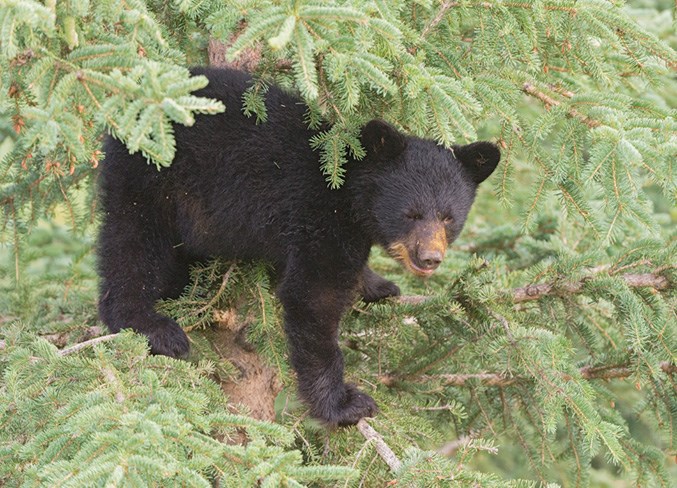The Cochrane Ecological Institute (CEI) has taken in its second rescued black bear cub since the provincial government changed its protocol on bear cub rehabilitation earlier this year.
Lisa Dahlseide, CEI’s education director, said Maskwa – named after the Cree word for bear – came into the institute’s care July 6, after it was hit by a car in the Grand Cache area. Initially, Dahseide said, staff was unsure if the bear would survive and immediately placed it in veterinary care.
“Her equilibrium was very off, her balance was poor,” she said. “Her face was quite swollen, her eyes were swollen as well [and] the pupils were dilated and took some time for them to even out. We weren’t quite sure how she would do. She wasn’t able to hold up her head, or anything.”
Fortunately, Maskwa recovered quite quickly, according to Dahlseide – considering her injuries. Within a week of being in care, the cub sprang back to health and is now being introduced to Charlie, the black bear cub rescued by CEI in May. Currently, Dahlseide said, the two bears are living in the same outdoor enclosure.
“They are best of friends,” she said. “They climb trees together and play. They love each other and cuddle at nighttime.”
Dahlseide noted it’s better to have the cubs together – most rehabilitation facilities in North America will keep rescued bears together, she said. In fact, the goal of Alberta Environment and Parks, according to Dahlseide, is to rehabilitate multiple cubs in one enclosure.
“They are very social animals at this stage, so it’s better to have them with another cub,” she said.
While the bears recover, Dahlseide said, CEI will continue to work with the provincial government in the hope it modifies the black bear protocol. Currently, the protocol states the bear cubs must be released Oct. 15.
“In the past, we’ve kept our cubs until their second hibernation, because they normally hibernate with their mom for two years,” Dahlseide said. “Then, we release them during hibernation, so it’s a soft release protocol where there’s no stress to them.”
According to Dahlseide, CEI is concerned the current protocol is insufficient, since longer rehabilitation leads to greater chance of success upon release.
“Releasing them right before winter in an unfamiliar area, where they’re not sure of their surroundings and where their best food sources are, seems counterproductive,” she said.
The institute is also concerned that releasing the cubs – who will appear larger and more like adults than wild bear cubs – will make them targets of hunters when bear hunting season begins Oct. 15, she added.
However, new hunting regulations have Dahlseide optimistic. This year, the season has been shortened and now closes on Oct. 31, whereas it used to run through November.
In the meantime, Dahlseide said, CEI will continue to achieve its rehabilitation goal for both cubs – getting the bears bigger and fatter than the rest of their age class prior to releasing them into the wild. Charlie, especially, is well on his way, according to Dahlseide.
“He’s strong and agile,” she said. “His favourite thing is climbing the trees. He’s getting along really well.”



